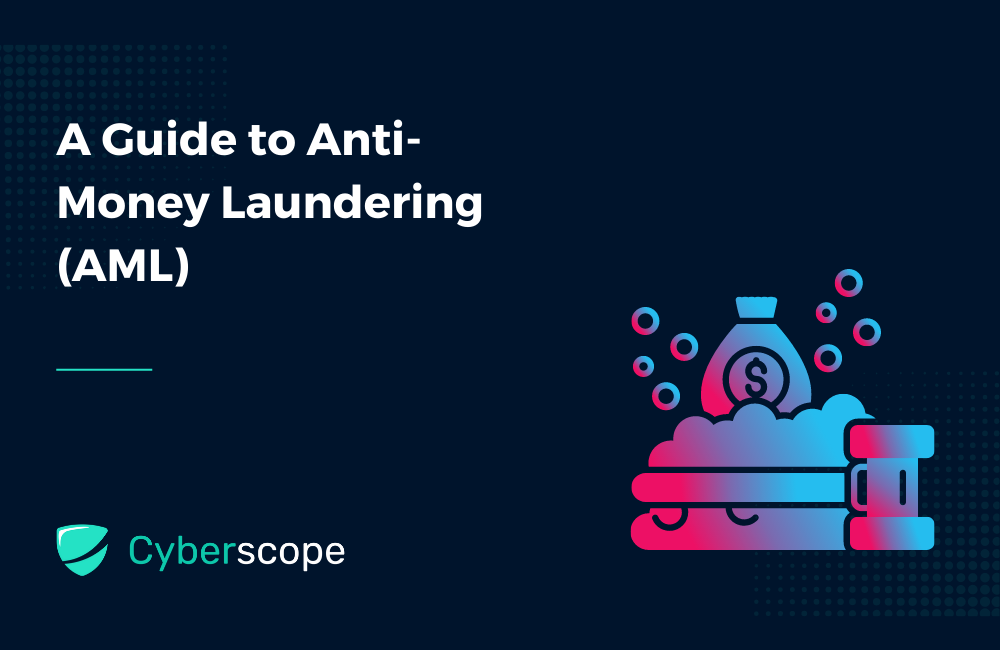

A Guide to Anti-Money Laundering (AML)

Recent technological advances have created an environment in which millions of people worldwide use virtual currencies, including cryptocurrencies and crypto tokens. These developments have also given rise to new criminal methods by which financial transactions can be conducted. While virtual currencies remain outside the scope of most international money laundering standards, there is a growing consensus that these markets require regulation and supervision to address some of their inherent risks.
The Anti-Money Laundering (AML) Act is not just a law that covers the Crypto industry, but it also covers other forms of digital currency. The AML Act can be used against people who are using crypto for illegal purposes as well as those who are using it for legitimate purposes.
What is money laundering?
Money laundering is the act of concealing the origin of illegally obtained funds through a series of transactions. It is a process in which illegal money is transformed into clean funds, and in which the existence of its source may be hidden from authorities.
In the cryptocurrency space, there are many ways to do this. One method involves creating multiple accounts on different exchanges, then using them to buy and sell bitcoin or other cryptocurrencies. This can be done with paper wallets or even digital wallets that are not connected to the internet.
Another way to launder cryptocurrency is through services like ShapeShift, where users can exchange one cryptocurrency for another without having their identity tied to the transaction. This can be done quickly and easily without requiring any personal information or proof of identity at all.
Money laundering can also take place online through third-party services like LocalBitcoins and Paxful, where users can find buyers who want to exchange cash for bitcoin or vice versa in person and have no need for registration or ID verification.
What is the Anti-Money Laundering (AML) Act?
The Anti-Money Laundering (AML) Act is a law that came into effect in 2001. The aim of the act was to combat money laundering and terrorism financing.
The Act requires all financial institutions, including banks and other financial service providers, to implement policies and procedures for detecting and preventing the use of their services by criminals and terrorists. The Act also requires those financial institutions to report suspicious transactions to authorities.
The Financial Intelligence Unit (FIU) has been established under section 4 of the AML Act to collect information on suspicious transactions and share it with other government agencies and law enforcement agencies.
What are the AML requirements for cryptocurrency?
Federal anti-money laundering requirements apply to financial institutions and other entities that have been designated as “financial institutions” by the Department of Treasury. Financial institutions include banks, brokers/dealers, money service businesses (MSBs), credit unions, mutual funds, and others. The Bank Secrecy Act and its implementing regulations require these financial institutions to collect information about the customer; maintain records of certain activities; file reports on cash transactions over $10,000 in any one day; file a suspicious activity report (SAR) when they suspect or have reason to suspect a transaction is suspicious in order to protect themselves from aiding and abetting criminal activities such as terrorist financing or money laundering; adopt procedures for verifying customer identity; adopt policies that address BSA compliance risk areas.
Do cryptocurrency transactions have a higher Money-Laundering risk?
The cryptocurrency market is viewed as a potential money laundering risk due to the pseudonymous and decentralized nature of virtual currencies. Despite this, the Anti-Money Laundering Directive does not apply to Cryptocurrencies, with the result that anyone can create a cryptocurrency to launder illicit funds without providing any identification. In addition, anonymity is possible through some virtual exchanges and wallets.
Now, how does the Know your Customer (KYC) verification comes into play? How has it managed to be an essential tool that helps financial organizations identify and mitigate risks associated with money laundering and terrorist financing?

What is the role of the KYC process in AML?
In the case of Anti-Money Laundering (AML) the main purpose of Know your Customer (KYC) is to introduce a registration and verification process for individuals who hold bank accounts and use financial transactions. It helps ensure that external or third parties who are entering the workplace are identified, assessed, and managed appropriately. This includes contractors, consultants, and sub-contractors. Thus, when another institution needs to know who is behind a transaction it can conduct an investigation by examining the customer’s profile stored on their system.
But what about the projects that have not acquired a KYC certificate? How can you ensure that you are dealing with people who are legitimate and not engaged in fraudulent transactions? Then, a tool like SafeScan is precisely what you need.

What is the use of Cyberscope’s SafeScan?
Safescan is an AML and KYC tool for crypto wallets. The software requires no programming skills or advanced knowledge of cryptocurrency as all you have to do is fill out a form with the wallet address and click “Search”. The tool will then begin searching through transactions from the given address, identifying any that might be suspicious and cross-referencing them against databases of known blacklisted or suspicious wallets. It will also cross-reference it with money laundering applications, such as CEX hot wallets, popular bridge networks, and tornado cash. The final analysis report will include any findings that can help you to understand some of the wallet’s past history.
Conclusion
The AML Act is not just a law that covers the Crypto industry, but it also covers other forms of digital currency. The AML Act can be used against people who are using crypto for illegal purposes as well as those who are using it for legitimate purposes.
As you can see from the above article, there are many ways in which you can help protect yourself from money laundering activities. The most important thing for any company or individual is to ensure that they have an effective anti-money laundering policy in place.

.jpg%3Falt%3Dmedia&w=640&q=75)

